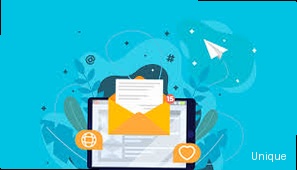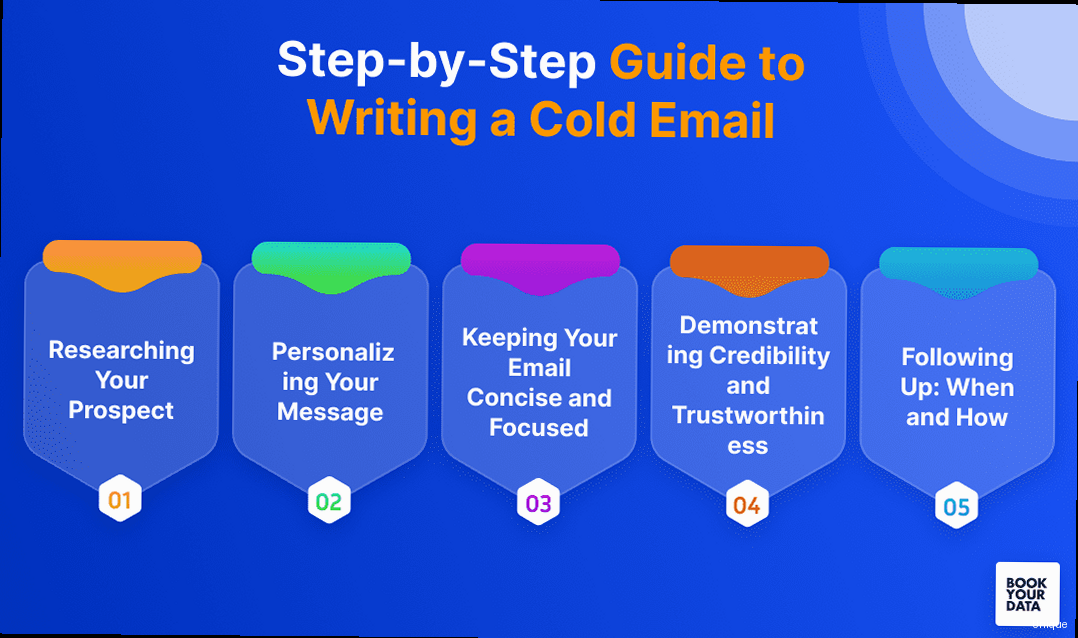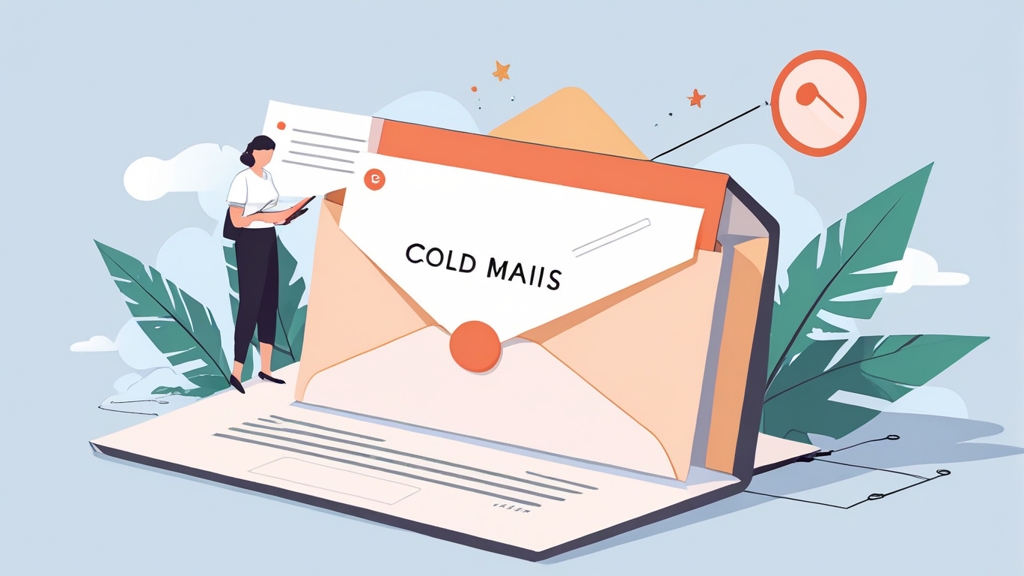Crafting Cold Emails That Convert: Focusing on Hyper-Personalization
Cold emailing remains a powerful tool for lead generation, but generic, impersonal blasts are easily ignored. This article dives deep into crafting hyper-personalized cold emails that resonate with recipients, significantly boosting open rates and response rates. We’ll explore strategies for effective research, crafting compelling subject lines and body copy, and leveraging personalization tokens to create truly engaging experiences.
Table of Contents
- Research and Segmentation: Laying the Foundation for Personalization
- Crafting Hyper-Personalized Subject Lines: Grabbing Attention Instantly
- Body Copy That Resonates: Demonstrating Genuine Understanding
- Personalization Tokens and Dynamic Content: Scaling Personalization Effectively
Research and Segmentation: Laying the Foundation for Personalization

Hyper-personalization hinges on thorough research and strategic segmentation. You can’t write a compelling, personalized email if you don’t understand your recipient and their needs. This section covers how to effectively research your prospects and segment them based on relevant criteria.
Deep Dive into Prospect Research
Start by gathering as much information as possible about your target prospects. This goes beyond just their job title and company. Aim to understand their role within the organization, their responsibilities, their challenges, and their interests.
- LinkedIn: This is your primary research tool. Look at their profile to understand their career trajectory, skills, and connections. Pay attention to their activity – what posts have they liked, commented on, or shared? This can provide valuable insights into their interests and concerns.
- Company Website: Explore the “About Us,” “Team,” and “Blog” sections of the company website. This helps you understand the company’s mission, values, and current initiatives. Look for press releases or news articles mentioning your prospect.
- Industry News and Publications: Stay informed about industry trends and challenges. Use Google Alerts or industry-specific newsletters to track news related to your prospect’s company or their area of expertise.
- Social Media (Twitter, etc.): Depending on your industry, your prospects might be active on other social media platforms. These platforms can offer a more casual and personal glimpse into their interests and opinions.
Example 1: Researching a Marketing Manager
Let’s say you’re targeting a Marketing Manager named Sarah at “Acme Corp.” You start by visiting Sarah’s LinkedIn profile. You notice she recently shared an article about the challenges of personalized marketing in a privacy-focused world. This gives you a valuable insight into her current concerns.
Next, you visit Acme Corp’s website and find a press release announcing their recent partnership with a data analytics company. This suggests they’re investing in data-driven marketing initiatives.
Example 2: Finding Common Ground on LinkedIn
While researching a prospect, you discover you both attended the same university, albeit years apart. This shared experience can be a great conversation starter in your cold email. You could mention it in your opening line: “I noticed we both have [University Name] in common – Go [Mascot Name]!”
Strategic Segmentation for Targeted Messaging
Once you’ve gathered sufficient data, segment your prospects into groups based on shared characteristics. This allows you to tailor your messaging to specific needs and interests, making your emails far more relevant.
- Industry: Group prospects by the industry they operate in. This allows you to address industry-specific challenges and opportunities.
- Company Size: Segment based on company size (e.g., small business, enterprise). Larger companies often have different needs and priorities than smaller ones.
- Job Title/Role: Group prospects by their job title or role within the organization. This allows you to tailor your message to their specific responsibilities and pain points.
- Pain Points: Identify common pain points based on your research and segment prospects accordingly. For example, you might have a segment of prospects struggling with lead generation or customer retention.
- Technology Stack: If your solution integrates with other technologies, segment prospects based on the tools they’re already using. This allows you to highlight the compatibility and benefits of your integration.
Example 3: Segmenting by Technology Stack
If you’re selling a marketing automation platform, you might segment prospects based on the CRM they’re currently using (e.g., Salesforce, HubSpot, Pipedrive). This allows you to highlight how your platform integrates with their existing CRM and provide a smoother transition.
Example 4: Segmenting by Recent Company Event
If a company recently announced a new product launch, you could segment them into a group and tailor your messaging to address how your solution can help them promote and manage the launch effectively. For example, you could write: “Congratulations on the recent launch of [Product Name]! We noticed…”.
Expert Tip: Use a CRM or sales automation tool to manage your prospect data and segment your lists effectively. Tools like HubSpot, Salesforce, and Pipedrive offer robust segmentation capabilities.
Crafting Hyper-Personalized Subject Lines: Grabbing Attention Instantly

Your subject line is the gatekeeper to your email. If it fails to capture attention, your carefully crafted message will never be read. This section focuses on creating hyper-personalized subject lines that cut through the noise and entice recipients to open your email.
Leveraging Personalization for Increased Open Rates
Generic subject lines like “Check out our product” or “Quick question” are easily ignored. Instead, use personalization to make your subject lines relevant and engaging.
- Mention their name: Using the recipient’s name in the subject line can increase open rates. However, be careful not to overdo it – avoid sounding too generic or robotic.
- Reference their company: Mentioning the company name can also be effective, especially if you’re addressing a specific challenge or opportunity related to their business.
- Highlight a shared connection: If you have a mutual connection, mention their name in the subject line. This can create instant rapport and increase trust.
- Refer to recent activity: If you know the recipient recently attended a conference or published an article, reference it in the subject line. This shows that you’ve done your research and are genuinely interested in their work.
- Ask a question related to their role: Posing a relevant question in the subject line can pique their curiosity and encourage them to open the email.
Example 1: Using a Name and Company Reference
Instead of “New Solutions for Marketing,” try: “Sarah, saw Acme Corp’s recent partnership with [Analytics Company]…” This is much more targeted and relevant.
Example 2: Highlighting a Shared Connection
Instead of “Connecting with You,” try: “Sarah, [Mutual Connection Name] suggested I reach out…” This builds immediate trust and credibility.
Creating Intrigue and Curiosity
While personalization is crucial, it’s also important to create a sense of intrigue and curiosity in your subject lines. This will encourage recipients to open your email even if they’re not familiar with you or your company.
- Use numbers or statistics: Numbers and statistics can be highly effective in capturing attention. For example, “3 Ways to Improve Your Lead Generation” or “Increase Conversions by 20%.”
- Create a sense of urgency: Use words like “urgent,” “limited time,” or “exclusive” to create a sense of urgency and encourage recipients to open your email immediately. However, use this sparingly and only when appropriate.
- Ask a thought-provoking question: Posing a question that challenges the recipient’s assumptions or encourages them to think differently can be highly effective.
- Use the “benefit-driven” approach: Clearly state the benefit that the recipient will receive by opening the email. For example, “Learn How to Save Time and Money” or “Discover the Secret to Increased Productivity.”
Example 3: Creating Urgency and Intrigue
Instead of “Marketing Tips,” try: “Sarah, Urgent: Missed Opportunity for Acme Corp?” This creates intrigue and encourages the recipient to open the email to find out what they’re missing.
Example 4: Using a Thought-Provoking Question
Instead of “Our Marketing Services,” try: “Sarah, Is Acme Corp Maximizing Its Marketing ROI?” This encourages the recipient to question their current marketing efforts and consider alternative solutions.
Expert Tip: A/B test your subject lines to see what resonates best with your target audience. Experiment with different personalization techniques and wording to optimize your open rates. Tools like Mailchimp and Sendinblue offer built-in A/B testing features.
Body Copy That Resonates: Demonstrating Genuine Understanding
A compelling subject line gets your email opened, but engaging body copy keeps the recipient reading and encourages them to take action. This section explores how to craft hyper-personalized body copy that demonstrates a genuine understanding of your prospect’s needs and challenges.
Personalizing the Opening Line
Your opening line is crucial for grabbing the reader’s attention and setting the tone for the rest of the email. Avoid generic greetings like “Dear Sir/Madam” or “To Whom It May Concern.” Instead, use a personalized opening line that demonstrates you’ve done your research.
- Reference their recent activity: If they recently shared an article or attended a conference, mention it in your opening line. This shows that you’re paying attention to their work.
- Compliment their work: Offer a genuine compliment on their accomplishments or contributions to the industry.
- Acknowledge a shared connection: If you have a mutual connection, mention their name in your opening line.
- Reference something specific about their company: Mention a recent achievement, a new product launch, or a notable initiative.
- Highlight a common interest: If you share a common interest, such as a hobby or a professional organization, mention it in your opening line.
Example 1: Referencing Recent Activity
Instead of “Hi Sarah,” try: “Sarah, I enjoyed your recent article on the challenges of personalized marketing. I particularly appreciated your point about…” This shows that you’ve read their work and are genuinely interested in their perspective.
Example 2: Complimenting Their Work
Instead of “Greetings,” try: “Sarah, I’ve been following Acme Corp’s marketing campaigns for some time, and I’m particularly impressed with the recent [Campaign Name]. The results you achieved are remarkable.” This offers a genuine compliment and demonstrates your understanding of their work.
Demonstrating Understanding of Their Needs
After your opening line, it’s essential to demonstrate that you understand your prospect’s needs and challenges. This requires thorough research and the ability to connect their pain points with your solution.
- Identify their pain points: Based on your research, identify the specific challenges that your prospect is likely facing. This could be related to lead generation, customer retention, marketing automation, or any other area relevant to your solution.
- Connect their pain points to your solution: Clearly explain how your solution can address their specific pain points and help them achieve their goals.
- Provide specific examples: Use case studies, testimonials, or data to demonstrate the value of your solution and how it has helped other companies in similar situations.
- Focus on benefits, not features: Highlight the benefits of your solution rather than just listing its features. Explain how your solution will save them time, money, or resources.
- Use their language: Tailor your language to match the tone and style of your prospect’s industry and company. Avoid using jargon or technical terms that they may not understand.
Example 3: Connecting Pain Points to Your Solution
“Sarah, I understand that many marketing managers are struggling to personalize their campaigns effectively while maintaining data privacy. Our platform helps you overcome this challenge by providing…” This directly addresses a known pain point and connects it to your solution.
Example 4: Providing Specific Examples
“We’ve helped companies like [Similar Company] increase their lead generation by 30% using our targeted advertising solutions. We believe we can achieve similar results for Acme Corp.” This provides a concrete example of your solution’s value.
Crafting a Clear and Concise Call to Action
Your email should have a clear and concise call to action (CTA) that tells the recipient what you want them to do next. Avoid vague or ambiguous CTAs like “Let me know what you think.” Instead, use specific and actionable CTAs that encourage them to engage with you.
- Schedule a call: “Would you be open to a brief 15-minute call next week to discuss how we can help Acme Corp achieve its marketing goals?”
- Download a resource: “Download our free e-book on [Relevant Topic] to learn more about how to improve your marketing performance.”
- Visit your website: “Visit our website to explore our case studies and learn more about our solutions.”
- Reply to your email: “What are your thoughts on this? I’d love to hear your feedback.”
- Connect on LinkedIn: “I’d be happy to connect with you on LinkedIn to share insights and best practices.”
Example 5: Clear and Concise Call to Action
“Would you be available for a quick 15-minute call next week to discuss how our platform can help Acme Corp improve its lead generation and data privacy compliance?” This is a specific and actionable CTA that makes it easy for the recipient to respond.
Quote: “People don’t buy products, they buy solutions to their problems.” – This quote underscores the importance of focusing on the benefits of your solution rather than just its features.
Personalization Tokens and Dynamic Content: Scaling Personalization Effectively
While manual personalization is effective, it’s not scalable for large outreach campaigns. This section explores how to leverage personalization tokens and dynamic content to automate the personalization process and reach a wider audience without sacrificing relevance.
Understanding Personalization Tokens
Personalization tokens are placeholders that are automatically replaced with specific information from your prospect database. This allows you to insert personalized details into your emails without having to manually edit each one.
- First Name:
{{first_name}} - Last Name:
{{last_name}} - Company Name:
{{company_name}} - Job Title:
{{job_title}} - Industry:
{{industry}} - Location:
{{location}} - Website:
{{website}}
Example 1: Using Personalization Tokens in an Email
Subject: {{first_name}}, Saw Acme Corp’s Recent Partnership…
Body: Hi {{first_name}}, I’m reaching out from [Your Company] to discuss how we can help {{company_name}} improve its marketing efforts…
Caveat: Handling Missing Data It’s crucial to handle cases where data is missing for a particular prospect. Most email marketing platforms allow you to set default values for personalization tokens. For example, if the “first_name” field is empty, you could use a generic greeting like “Hi there” or “Hello.”
Implementing Dynamic Content
Dynamic content takes personalization a step further by allowing you to display different content blocks based on specific criteria. This allows you to tailor your message to different segments of your audience without having to create separate email campaigns.
- Industry-Specific Content: Display different content based on the recipient’s industry. For example, you could showcase case studies or testimonials from companies in the same industry.
- Company Size-Specific Content: Display different content based on the recipient’s company size. For example, you could highlight features that are particularly relevant to small businesses or enterprises.
- Job Title-Specific Content: Display different content based on the recipient’s job title. For example, you could tailor your message to the specific responsibilities and pain points of marketing managers or sales directors.
Example 2: Industry-Specific Content
You could use the following logic in your email marketing platform:
{% if industry == "Technology" %}
<p>We've helped leading technology companies like [Company A] and [Company B] improve their customer acquisition rates by 40%.</p>
{% elif industry == "Healthcare" %}
<p>We've partnered with major healthcare providers like [Hospital X] and [Clinic Y] to streamline their patient communication and reduce administrative costs.</p>
{% else %}
<p>We've worked with a wide range of companies to achieve significant improvements in their marketing performance.</p>
{% endif %}
Example 3: Dynamic Content Based on Lead Source
If you know where a lead originated (e.g., a specific webinar, a content download), you can use dynamic content to reference that source and personalize the message further. For example:
{% if lead_source == "Webinar A" %}
<p>Thanks for attending our webinar on [Webinar Topic]! We hope you found the information helpful.</p>
{% elif lead_source == "Content Download B" %}
<p>Thanks for downloading our e-book on [E-book Topic]! We're confident it will provide valuable insights for your business.</p>
{% endif %}
Example 4: Personalizing the Call to Action with Dynamic Content
Based on the recipient’s job title, you could tailor the call to action. For a marketing manager, you might suggest downloading a marketing strategy guide. For a sales director, you might suggest scheduling a demo of your sales automation tools.
{% if job_title == "Marketing Manager" %}
<p><a href="[Link to Marketing Strategy Guide]">Download our free marketing strategy guide</a></p>
{% elif job_title == "Sales Director" %}
<p><a href="[Link to Sales Automation Demo]">Schedule a demo of our sales automation tools</a></p>
{% endif %}
External Link: For more information on dynamic content, explore resources from HubSpot: HubSpot Dynamic Content
